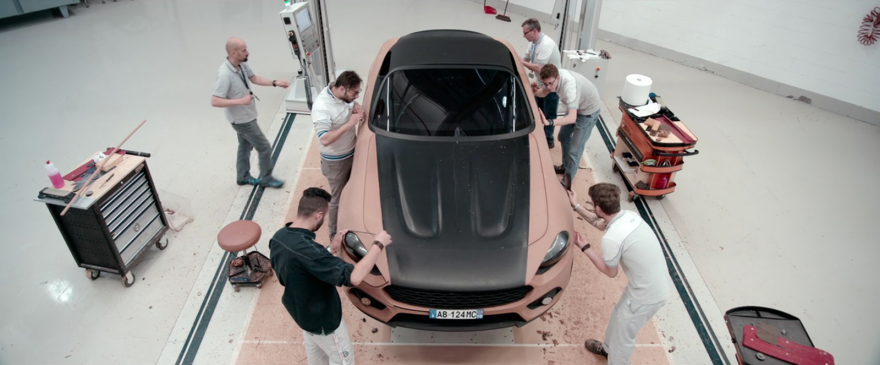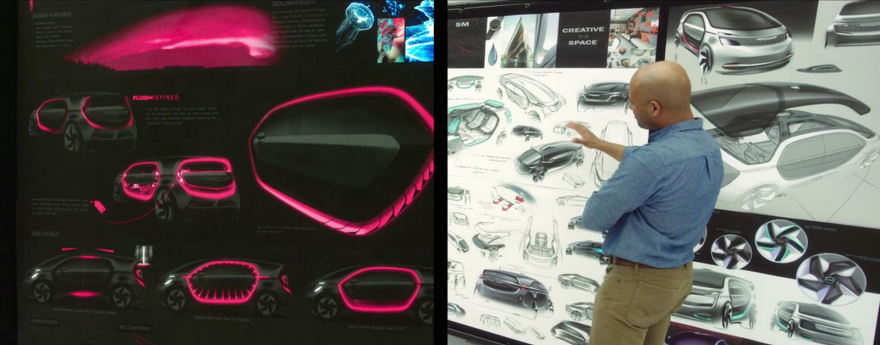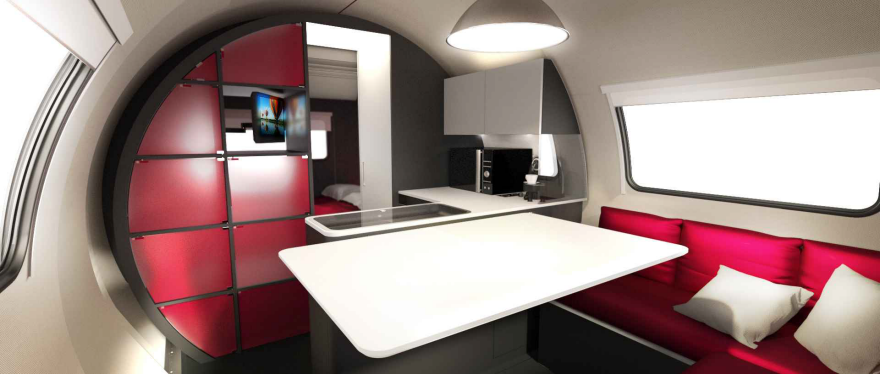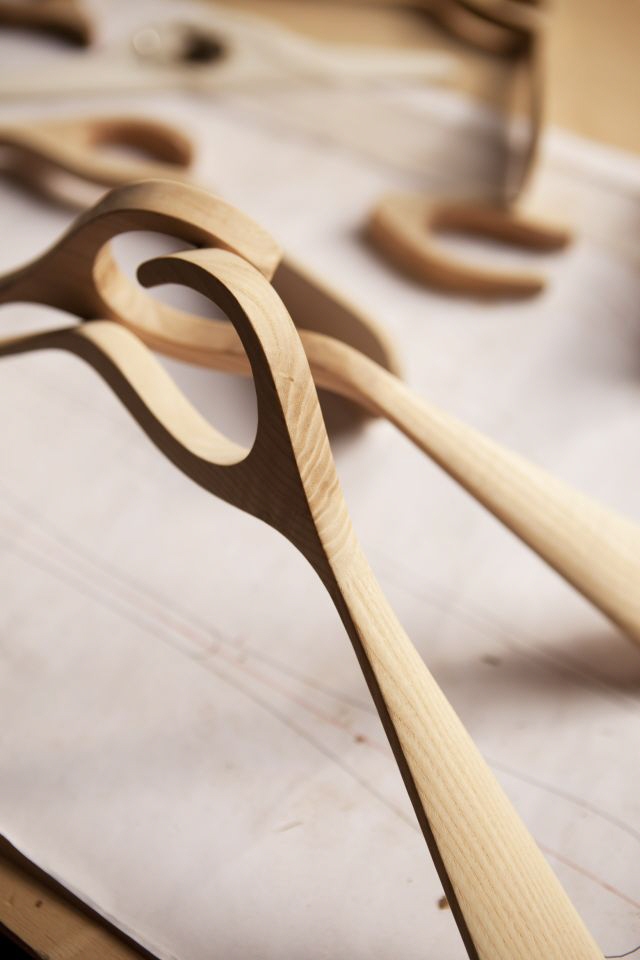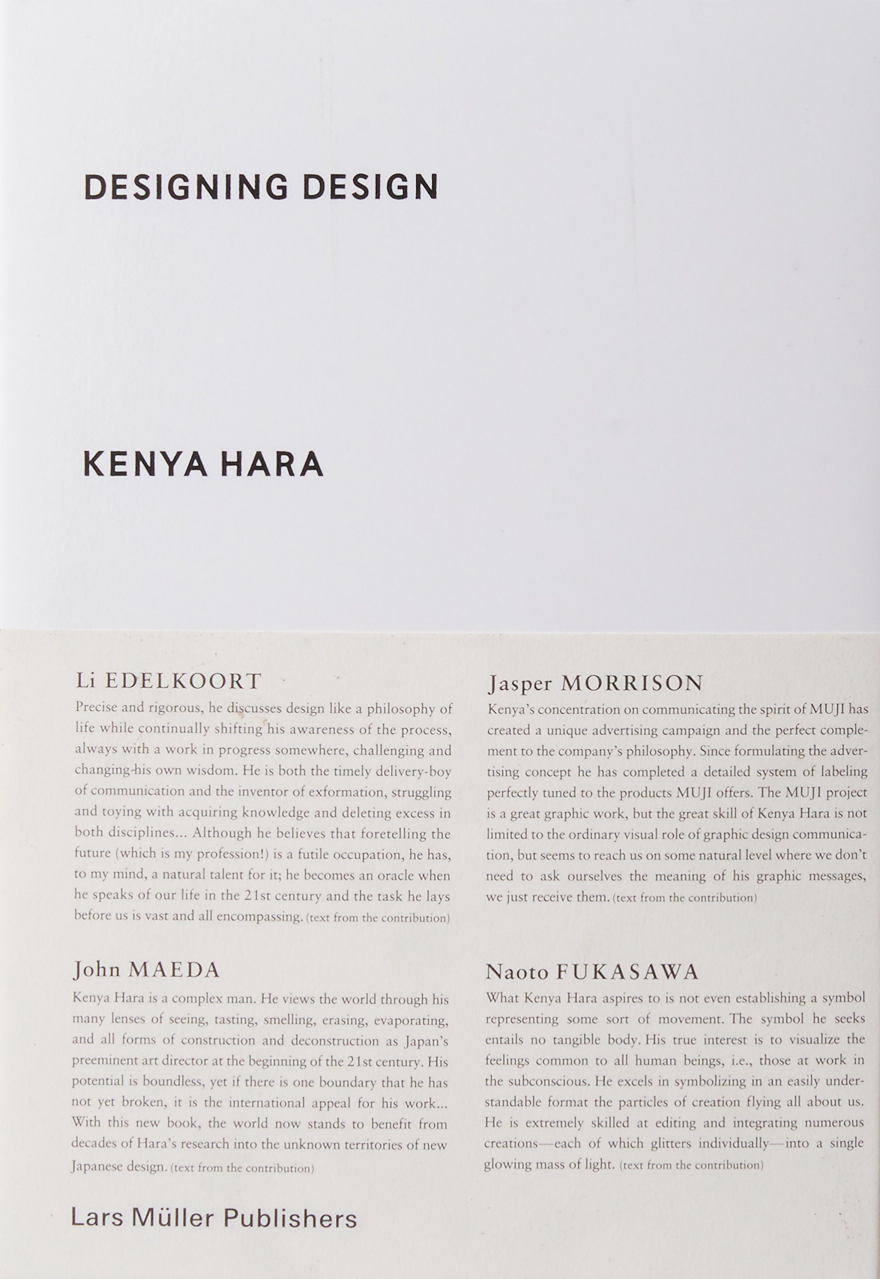Where does the time go? Just last week we introduced you to the first three Jury Captains for the 2017 Core77 Design Awardsso you could get familiar with the design minds that will be reviewing your Design Concept, Visual Communication and Furniture & Lighting entries. Now we have a new batch of Jury Captains to introduce, and we are just 3 weeks away from our regular pricing deadline. (That's March 8th, just in case you don't have it marked on your calendar.)
Before you jot down that important date, learn more about the jury team leaders of the Transportation, Design Education Initiative and Service Design categories.
Project Lead Designer, Nissan
So your job title, according to LinkedIn, is "Future Mobility Experience Catalyst" at Nissan—pretty cool. Tell us, what's up with that? What does this job entail?
My official role in the studio is Project Lead Designer, "Future Mobility Experience design" is our team's expertise. We focus on designing solutions for our customer's future mobility possibilities. It is very rewarding to know, not only that we can fix user's problems, but also have a chance to design experiences that are functional and unique to Nissan. The challenge is to make these experiences into tangible objects that will become part of a real product. We are "catalysts" in that sense.
You've been working at Nissan for over 15 years, what are some of the highlights and milestone in terms of projects you've worked on there over that time? What makes them so memorable?
This is a great question. There are two perspectives, the "personal" side and "company" side. The "personal" side is about directly working with the team on product design. In a project team, each role is different and, depending on what role you play, it affects the way you position yourself and work with others. The end result is the direct reflection of the team's dynamic. The current Nissan Maxima 4-door sports car is a great example of the several successful production and concept car projects that I was able to work with the best talents at Nissan. I am very proud of being part of that. On the "company" side, my role has changed from being part of a very mature design development team to a more exploratory, researching, experiment-type role. Today, mobility experiences are deeply integrated into my everyday tasks.It all starts with users, not innovations nor design. It has been an eye-opening process be part of learning while influencing others. It is an eye-opening journey because it requires a whole different process. It is not very easy to change the way we work and think, but it is very motivating to have the opportunity not only to change the design process, but also influence the mindset of the designers.
Your resume says you're transforming the a concept experience model into a real life model—how exactly is Nissan tackling this and what kinds of features will this model have?
People are changing, so is the economy. In the experiential economy time like today, the traditional way of designing is no longer enough to meet the consumer's expectations. Nowadays, design is so much more integral part of many things. It is part of the holistic experience expectation. With a concept experience model, we test and define our vision with users and, only then, we fully focus with all disciplines on how the vision could be realized in the real products. To get to the real product phase, an experience modeling is surprisingly simple. Bring users early in the process to share the vision, and the team sprints for opportunities that are meaningful and inspiring for the customers. Put those experiences into specs and the team goes to work. Just as simple as that. Our approach is to deliver what matters most to our customers as soon as it could be. Though they may be small and gradual, those changes would be made in a way to be meaningful to our customers and the company as well. In that sense, our products may be the concept experience models in the true sense.
In what ways do you think our concept of transportation will change with future vehicles?
We shifted from horses to cars about a century ago, and that's what I feel it is happening again in the automotive industry, just like the TV has lost its identity and the automotive industry is no exception. The blurring the boundary between cars and services has started. Even though cars and services will be parallel in our life for another while and they will eventually merge. This wave will disrupt so many aspects of our life, just like riding horses to driving cars did - our city infrastructures, rental car companies, passenger/merchandise transportations, cityscape, natural resources, retail, environments, health, post-sale services, well-being, finance, time, space and, most importantly, PEOPLE. Car ownership models will change, too. If you ask a Nissan customer today, "What do you drive?," he or she would say a Rogue or something.But in the future, if asked, "What do you drive?" or even "What do you ride?" They may simply say, "Nissan," because they will say Nissan. I feel very fortunate being a designer now and the excitement that is heading our way. I hope many talents will help redefine what CAR vs MOBILITY is in many ways. Join us if you want to change the world together.
![]()
Creative Director, Vrontikis Design Office
Petrula Vrontikis is a leading influence in graphic design. Her current work includes research, writing, consulting, creating brand communication strategies, training, and coaching. She received an AIGA Fellows Award honoring her as an essential voice raising the understanding of design within the industry and among the business and cultural communities. She is creative director and owner of Vrontikis Design Office (@vrontikis and 35k.com) and a professor at Art Center College of Design, teaching graphic design, career development, and professional practice courses.
For the latest edition of "Core Talk", Vrontikis talks with Core77 about her teaching methods that emphasize the importance of relaying professional knowledge as well as what she hopes to see in the Design Awards submissions.
Co-founder, Snook
Sarah is the Co-founder and Managing Director of Snook, an award winning design consultancy working at the forefront of civic, public sector and democratic innovation. Sarah focuses on making social change happen by re-thinking public services from a human perspective.
You worked in government before co-founding your company Snook. Can you tell me more about that and how that led you to the realm of service design? How did you think design could help create change in a different way than mere public policy can?
I was actually studying product design before having a shot at working in government in a non-departmental public body called Skills Development Scotland, and we'd undertaken a project with them when we were students where they got a group of product designers to start looking at services and how you could change them to better fit customer needs. This was actually quite a landmark project at the time because it was a kind of precursor to a lot of the innovative work I've seen going on in the UK with government digital service and new Scottish approach to service design to be run by governments—none of that really existed when we were doing this kind of work. It just seemed really obvious that you could take a design approach, which is thinking about how people use something and need to do something, and put that into the development process of any product or service that's coming out of government.
So I always thought that from being inside that environment and actually kind of living it and seeing how it works, it was easy to spot where there were quick wins as well as larger, more long term strategic wins for embedding different design approaches inside the process of policy into implementation. I also think that design as an approach and service design could help create the right cultural setting and space for [policy] to exist in—it's inherently a bit more collaborative, it's more visual, and it really focuses on testing out stuff before you implement it. So I've always seen that as a massive part of embedding design inside of these organizations, and something that when we went on to create Snook we always said we would do. [We didn't just want to] help organizations do better design and create better services, [we wanted to] give them the capacity to do that themselves. So I was sold on service design then and since seeing it rise and rise in the industry, within public services, within government, within commercial services as well.
What do you think is the greatest misunderstanding about service design?
I think that service design has developed an aesthetic where a lot of people think it's only about doing social good. Whilst we've seen over the last 10-20 years, probably even from the 60s and 70s when people like [Victor] Papanek were talking about designing for good and social good, it's not just that—it can do some bad things in the world. It can also help make things a lot more efficient in manufacturing process lines, so that's one of the common myths and misunderstandings that I've seen about service design. But what [service design has done] for a lot of people is open up a range of tools and approaches which allow us to focus on the customer, the citizen, and allow us to actually bring form to ideas and quite intangible ideas before they're scaled. The clarity of service design for me is that it's about designing services, and it's about helping people to do something better.
In order to create a truly intuitive and beneficial service, what are three things a designer must do or keep or mind during the design process?
You should always remember that your research isn't about asking people what they want; it's about understanding what they need. And that's a really clear distinction between researching to understand the user's needs as opposed to a consultation, which is asking people what they would like to see. You could research from what people say they would like to see, but really it's about understanding what people need to do, the tasks they need to do, how they like to do them, and [thinking about how] can you help them do them better.
I think the second thing that every designer must keep in mind is test early. Even if you're testing out design principles for how a service might operate, whether you're testing out a mockup of a website or a full service experience is to get it out there and get it out there early so that you don't hold onto an idea or a service concept for a really long time, build it up, spend lots of money on it and then realize it that, actually, it fails when you put it in the hands of users. That's really really important.
The third thing is that services don't happen in a vacuum, they happen in the world. They're part of wider systems. Sometimes they ask users to move from different organizations in the context of government (for example, you might move from the department you work in pensions to then work with a commercial company like a bank). And services need to be, especially for the data that will serve customers, inter-operable between all of those organizations, so you've got to be really considerate of the wider system where your service will fit and I think that's a key thing that a lot of early design education misses out. That's not a criticism of design education but it's a consideration for how we can actually train people to design services in the real world, where the leverage might come there. So having that sense of realism about the possibilities, as well as a sense of realism around what you can actually achieve on the given budget for that service, what the organization can actually deliver also needs to be considered.
This interview has been edited and condensed for clarity
Regular deadline to get your projects in front of these industry leaders is March 8th. Don't wait: submit your entry in today!
![]()


